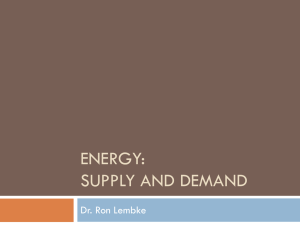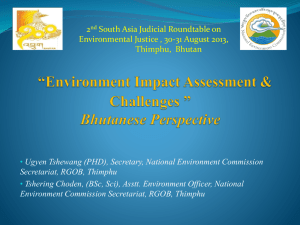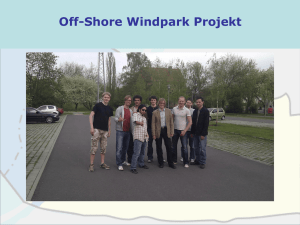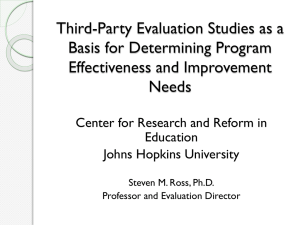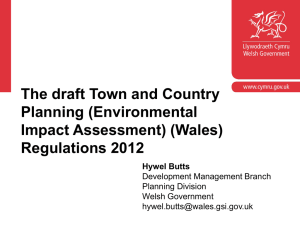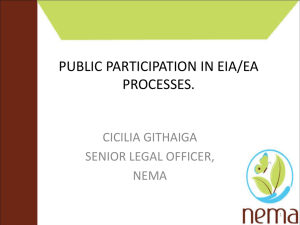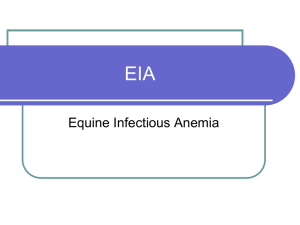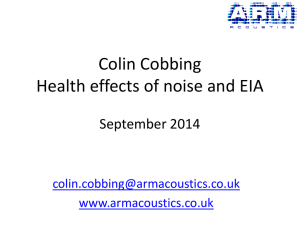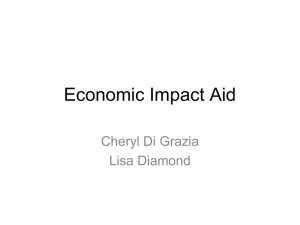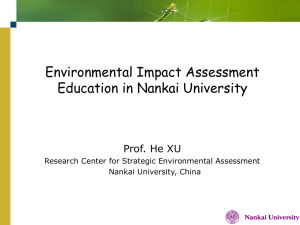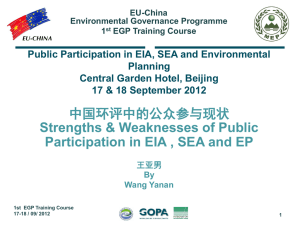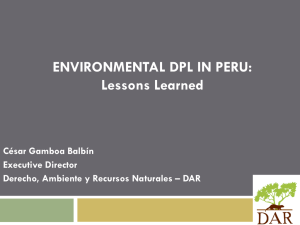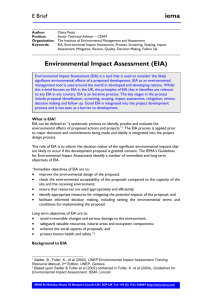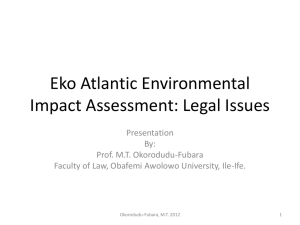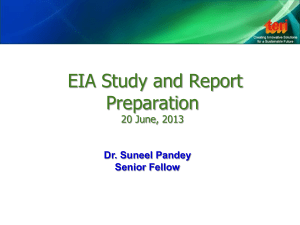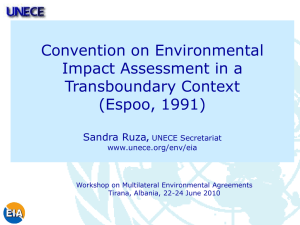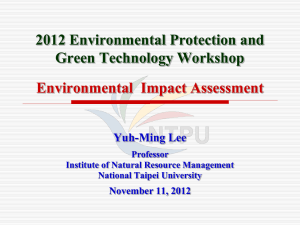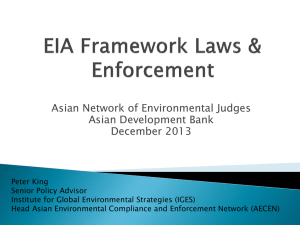EIAM - derel
advertisement
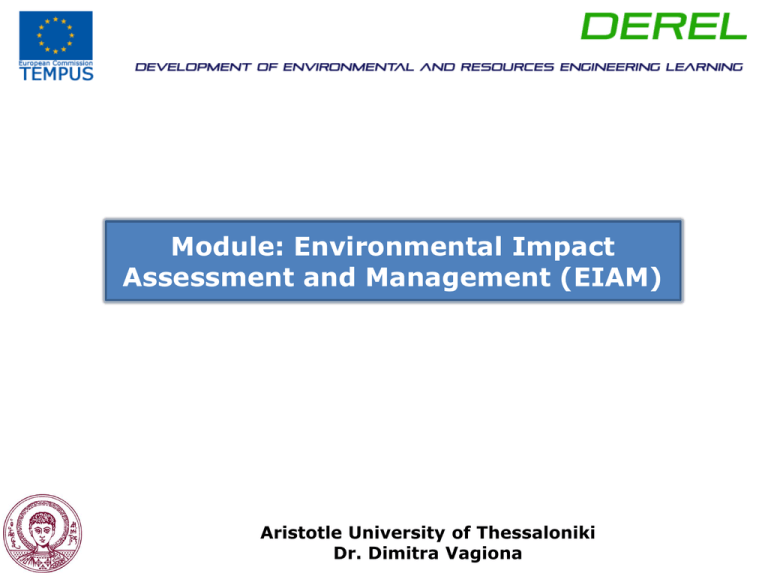
Module: Environmental Impact Assessment and Management (EIAM) Aristotle University of Thessaloniki Dr. Dimitra Vagiona Module: Environmental Impact Assessment and Management (EIAM) Main goals Understand the advances of EIA in regard to environmental management Get familiar with National and European legislation concerning EIA Understand the elements of EIA process Understand the natural and anthropogenic components of the environment Perceive tools and techniques for EIA Get familiar with the format of an EIA Report Outline of the module 1st week Introduction – General concepts 2nd week Legal framework 3rd week Alternatives •Definition of basic concepts: sustainability, carrying capacity of the environment, projects, programs, EIA, EIS, SEA •Purpose, scope and content of EIA policy and legislation (European Directives, National Law) •Principles for a functional EIA system • Introduction to EIA process •Identification of criteria to compare alternatives •Performance matrix •Methods of selecting among alternatives, case studies Outline of the module 4th week Screening procedure Scoping procedure 5th week Public participation 6th week Broader definition of the environment (1) •Project lists for screening •Criteria for the determination of the need of EIA •Preliminary EIA and other types of screening (information included, contents) •Steps considered in scoping and evaluation criteria for the scoping impacts •Stakeholders involved in EIA •Principles of public involvement •Public involvement techniques •Non-biotic characteristics of the environment (climatic and bioclimatic features, morphology, soil, visional features etc) •Natural environment (flora, fauna, protected areas) •Existing and potential conditions Outline of the module 7th week Broader definition of the environment (2) 8th week Impact classification Mitigation and impact management 9th week Tools for impact identification (1) •Anthropogenic environment (land uses, built environment, socio-economic environment, historical and cultural environment, acoustic etc) •Surface and groundwaters •Existing and potential conditions •Effects caused by projects •Classification of impacts (positive/adverse, primary/secondary/tertiary, cumulative, residual, temporal, spatial etc) •Case studies •Checklists •Network analysis •Leopold’s matrix •Flow diagrams Outline of the module 10th week Tools for impact identification (2) 11th week Techniques for Environmental Appraisal (1) 12th week Techniques for Environmental Appraisal (2) •Stepped or chained matrices •Delphi method •Overlays •Dose – response functions •Case studies: •Multicriteria Analysis - MCA •Analytical Hierarchy Process - AHP •GIS – Geographical Information System •CBA – Cost Benefit Analysis •RA – Risk Analysis • Case studies: •IO – Input Output •LCA – Life Cycle Analysis •CV – Contingent Valuation •CEA – Cost Effectiveness Analysis •MP – Mathematical Programming Outline of the module 13th week EIA reporting • guidelines for effective EIA report preparation and production •Main difficulties encountered in EIA preparation •Presentation of an integrated case study Assignment: Case study - Perform an EIA study (report) The tutor Environmental Engineering Civil Engineering Chemical Engineering Environmental Sciences Sciences of Planning The students Different educational backgrounds Different EIA regimes Suggested books 1. Peter Morris and Riki Therivel, 2009, Methods of Environmental Impact Assessment, Routledge 2. John Glasson, Riki Therivel, Andrew Chadwick, 2005, Introduction to environmental impact assessment, Taylor and Francis 3. Peter Wathern, 2004, Environmental Impact Assessment: Theory and Practice, Routledge, Taylor and Francis Group, London and New York 4. Nolberto Munier, 2004, Multicriteria Environmental Assessment: A Practical Guide, Kluwer Academic Publishers, Dordrecht, Boston, London 5. Christopher Wood, 2003, Environmental Impact Assessment: A Comperative Review, Person, Prentice Hall 6. Barbara Carroll and Trevor Turpin, 2003, Environmental Impact Assessment Handbook, a practical guide for planners, developers and communities, Hobbs the Printers, Hampshire 7. David P. Lawrence, 2003, Environmental Impact Assessment: Practical Solutions to Recurrent Problems, Wiley - Interscience 8. Peter Morris and Riki Therivel, 2001, Methods of Environmental Impact Assessment, Spon Press, Taylor and Francis Group, London and New York Internet site http://eia.unu.edu/index.html

